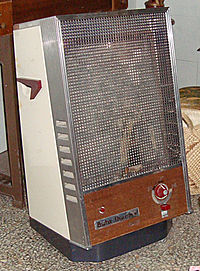
Photo from wikipedia
Abstract Scrubbers are more and more used to recover waste heat from coal-fired exhaust flue gas (EFG). But the heat and mass transfer mechanism in the counter flow direct contact… Click to show full abstract
Abstract Scrubbers are more and more used to recover waste heat from coal-fired exhaust flue gas (EFG). But the heat and mass transfer mechanism in the counter flow direct contact scrubber is not clear enough, and the heat recovery rate (E) needs to be improved cost effectively. This paper proposes to use a simulation model to study the heat and mass transfer mechanism and thus to improve the scrubber design without intensive experiments. A mathematical model based on the two-film theory was established, and the finite difference method was used to solve it. The model was validated using experimental data and heat recovery equation is obtained with relation to the main influencing factors. The results show that the most sensitive factors on E are the liquid-to-gas ratio rwf and the equivalent diameter of water droplets rd. In addition, height to diameter ratio (H/D) is more important than flue gas velocity. E can be increased by 25% and 36% when rwf increases from 4 to 6 and rd decreases from 0.002 m to 0.0015 m, respectively. Intensive simulations help determine the scope of the influencing factors to improve scrubber design.
Journal Title: Energy
Year Published: 2021
Link to full text (if available)
Share on Social Media: Sign Up to like & get
recommendations!